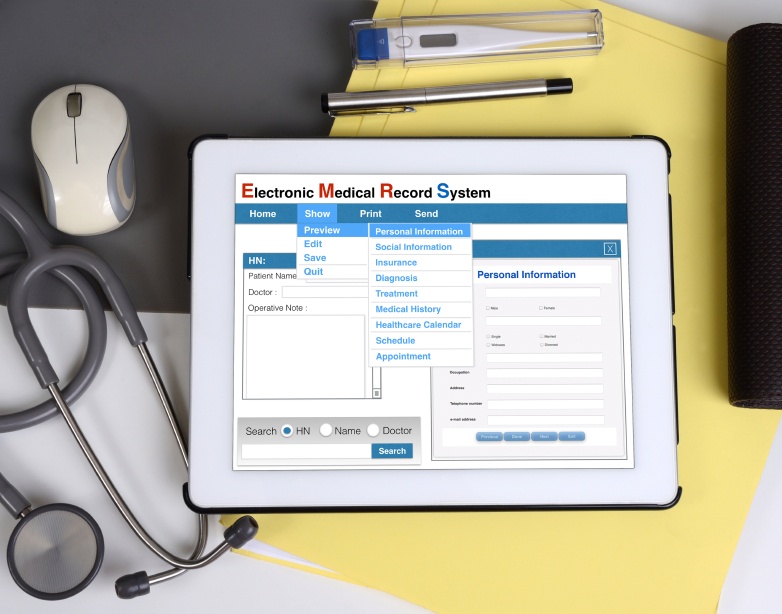Last week I published the first in a series of seven blog posts that discuss some of the misperceptions about lab interfaces and intelligent clinical data extraction software.
Read MorePosted by Greg Gies on Aug 21, 2015 10:22:41 AM
Posted by Greg Gies on Aug 18, 2015 8:22:00 PM
As I’m standing in line at my favorite coffee shop, I’m thinking about how baristas have perfected workflow; and now have improved perfection by allowing me to eliminate the line entirely by ordering in advance with my smart phone. It always excites me when I see a sequence of steps refined for optimum efficiency. I know it's odd, but I'm really strange like that.
Read MorePosted by Greg Gies on Aug 13, 2015 11:35:00 AM
In the course of helping hospitals automate data entry of clinical lab results into the EMR (or LIS in cases where all orders are centrally managed) we’ve spoken to thousands of healthcare professionals about their
lab results reporting procedures. Invariably the subject of “lab interfaces” comes up. There are several misperceptions about interfaces and intelligent clinical data extraction software and lab results interoperability in general that I’ll attempt to clear up in a series of seven blog posts.
Read MorePosted by Ellen Bzomowski on Aug 12, 2015 2:28:00 PM
Why do we have EMRs again? Were they meant to be electronic file folders? No, they are meant to hold discrete, structured data and add value by summarizing the most valuable data, giving us a more complete picture of a patient’s history, and allowing us to analyze and see trends in the data while automatically alerting us to data outside of allowed values.
Read MorePosted by Dr. John Daller, MD, PhD, FACS on Aug 7, 2015 11:18:33 AM
In our first two blogs of this series, we discussed outreach programs beginning with education and facilitating improved patient care in the local community. What happens when the success of these efforts require a more frequent and sustained presence in the local medical community, particularly if the main facility is at a distance and precludes frequent visits by your team? In these cases, it may be beneficial to consider establishing your own brick and mortar facility to provide services to the patients on a routine basis.
While the location need not be fully staffed with all the usual transplant resources, you will want to have, most likely, a coordinator and an administrative assistant present to address patient issues as they arise. In addition, this ensures that the work flow continues in a more timely fashion. Such an arrangement helps to eliminate much of the natural lag time that occurs when tracking results and data for testing ordered by providers who do not have a full time presence in the community.
Read MorePosted by Ellen Bzomowski on Aug 5, 2015 3:30:00 PM
You finally found the perfect solution to problem of getting data out of documents and into your EMR or other system. It’s a system that automates this data entry and the workflows surrounding the entire document handling and quality assurance processes. Now it’s time to go ask for permission (budget) to purchase this solution.
In the first and second blogs in this series, we began by detailing the first and most basic area of justification that needs to be laid out, medical assistants’ time and additional staffing requirements and continued by looking at the improvements that are brought to Quality of Care of your patients. What about other effects on all the other clinical staff in your department and organization?
Read MorePosted by Greg Gies on Aug 3, 2015 11:52:00 AM
In an article in Forbes business magazine today, Peter Ubel, begins to investigate the question of whether or not we should be striving for a world in which all transplant candidates should have access to LearJets so that they can place themselves on multiple waiting lists and have a greater chance of reaching the top of that list in time? No matter how you feel personally or professionally about this issue, an important point that he raises in the world of transplant is this: as technology (planes, drugs, etc.) improves and allows for greater possibilities of organs for a greater pool of candidates, how can we be sure that waitlists are always accurate and up to date. What technologies do we need to deploy to be sure that they are so that we can keep up with the speed in which patients can be ushered to us? Being certain that all the data you need in order to maintain these waitlists are accurate and ready to compute the items needed to update that list are very important. If you have lab results or other important documents in a pile of documents, can you be sure you have the most accurate list?
Read MorePosted by Greg Gies on Aug 3, 2015 8:09:00 AM
Recently, I had the misfortune of sustaining an injury while running. Due to the nature of my injury I visited a total of five providers in the span of one week. The events that unfolded provided the perfect opportunity to reflect on the state of health information interoperability six years after the passing of the HITECH Act.
Read MorePosted by Ellen Bzomowski on Jul 30, 2015 4:09:00 PM
You finally found the perfect solution to problem of getting data out of documents and into your EMR or other system. It’s a system that automates this data entry and the workflows surrounding the entire document handling and quality assurance processes. Now it’s time to go ask for permission (budget) to purchase this solution.
In our first blog, we began by detailing the first and most basic area of justification that needs to be laid out, medical assistants’ time and additional staffing requirements. While these are an essential part of your justification, if you stop here, you have not fully laid out the tactical and strategic improvements that this type of system offers your department and organization.
The second area for ROI justification should look at how you will be able to better care for your patients and avoid costs down the road for data errors:
1. Quality of Care improvements:
Read MorePosted by Ellen Bzomowski on Jul 24, 2015 11:30:56 AM
Your department is overwhelmed with data entry. Incoming faxes with lab results and other clinical data swamp your staff. You are beginning to worry about quality of care and data entry errors. Your staff is wondering if they are here to help patients or to improve their typing skills.
So, you finally found the perfect solution to your problem. It’s a system that automates this data entry and the workflows surrounding the entire document handling and quality assurance processes. So, now it’s time to go ask for permission (budget) to purchase this solution.
Read More






